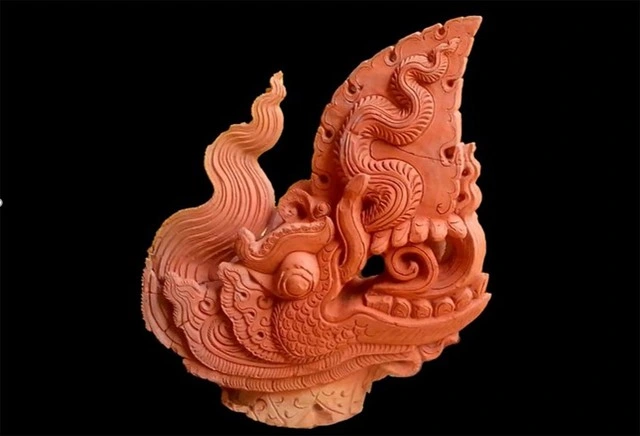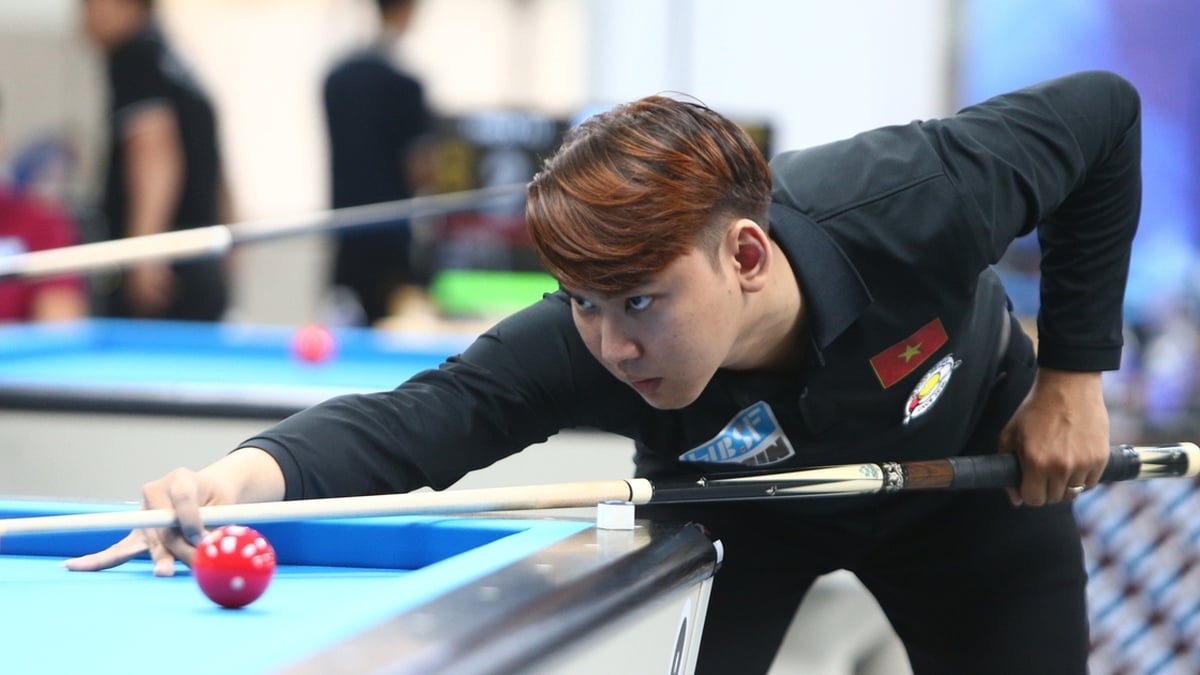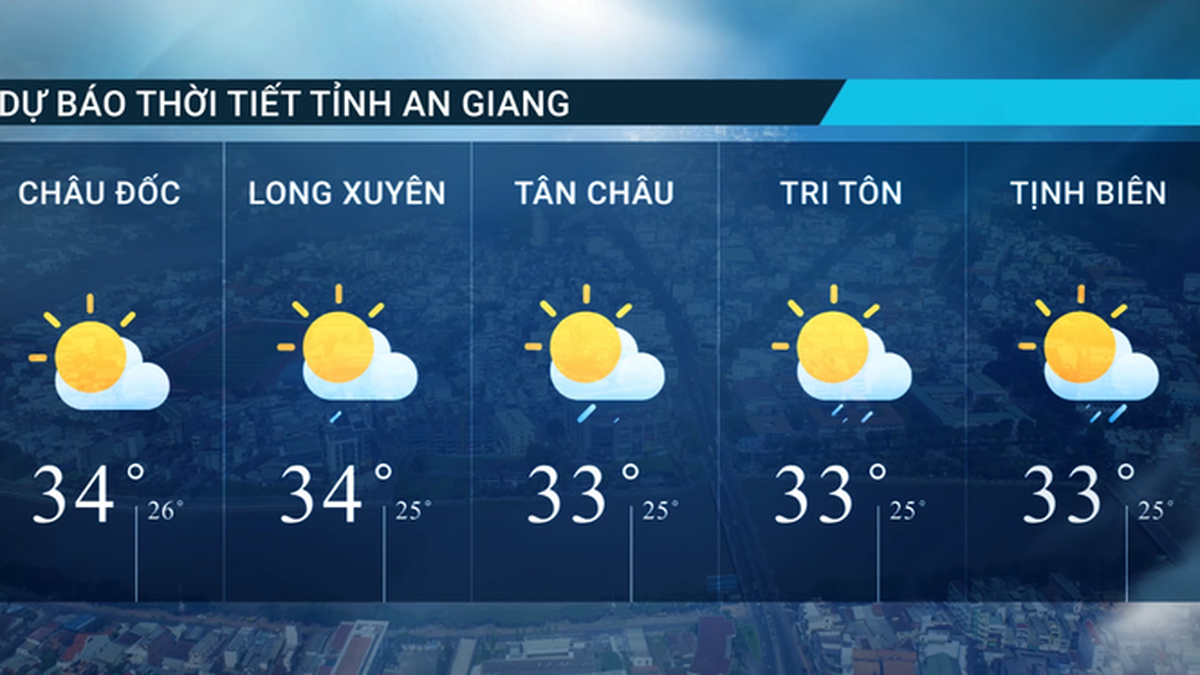One of the two most intact dragon heads of the Tran Dynasty
The national treasure, the Tran Dynasty Dragon Head of the Thang Long Imperial Citadel, has the artifact identification code Dragon Head C7-5201. This dragon head was discovered in the area where traces of octagonal architecture were discovered in the Imperial Citadel. Archaeological data show that when it was first discovered, the statue was still in its original shape. The mane was broken and some small pieces were missing; the remaining parts were relatively intact.
After discovery, the artifact was taken out of the pit, cleaned, marked, documented, and the broken parts were reassembled and restored with stone powder and two-component glue. The restored part was recolored with a slightly different shade than the original part. In 2014, the Institute of Archaeology handed over Dragon Head C7-5201 to the Thang Long - Hanoi Heritage Conservation Center for unified management, display, and introduction.
According to the treasure record, Dragon Head C7-5201 is a round statue, 60 cm high. The dragon head shows a dragon in a moving position, the mane and crest move strongly with many curves, facing forward. The dragon head has wide cheeks; the mouth is wide open, holding a precious gem, the teeth are clearly shown; the nose and upper lip turn into a crest of fire in the shape of an S-shaped thunder pattern. The fangs are long and curved up following the crest of fire. The small, long tongue covers the precious gem and also curves up towards the upper lip following the crest of fire. The eyes are large, round and prominent, the eyebrows are long and form a strip flying upwards. The large, wide ears are shaped to curve along the movement of the crest and mane. The body is covered with scales.

Dragon head C7-5201. Documents of the Department of Cultural Heritage
According to archaeologists, Thang Long is the place where the most dragon specimens have been discovered so far. Regarding the location of the statues on the roof, the dragon head statues are decorated in two locations. The first location is the dragon head decorated at the end of the clamp, that is, at the top of the gable of the building, the decorative statue in this location is often called Kim; the second location is at the end of the flowing bank. In this location, the statue is often called So. The Thang Long dragon head C7-5201 belongs to the first group, that is Kim.
According to the treasure records, compared with other known specimens, Thang Long Dragon Head C7-5201 belongs to the large-sized group. The largest known dragon head version is the Ly Dynasty dragon head discovered in pit A11 of the 18 Hoang Dieu archaeological site in the Thang Long Imperial Citadel Heritage Site. This specimen only has the crest, which has been restored to its original height of 110 cm.
According to incomplete statistics of archaeologists, large-sized dragon head statues of the Tran Dynasty with the function of a pair of pliers have been discovered at the following locations: Thang Long Imperial Citadel (Hanoi), Tam Duong ( Thai Binh ), Tuc Mac (Nam Dinh), and Tu Phuc Tomb (Quang Ninh). Of these, two relatively intact versions are the version at Tam Duong and Dragon Head version C7-5201. Thus, it can be seen that Dragon Head C7-5201 currently kept at Thang Long Imperial Citadel is one of the two most intact dragon heads in the known collection of dragon heads of the Tran Dynasty.
Continuity of architecture
Dragon Head C7-5201 discovered at Thang Long Imperial Citadel is a decorative material in the position of Kim, placed on the roof of the architectural work with the meaning of praying for the work to avoid fire. However, although both are called Long Van (dragon head), comparing Long Van of Ly and Tran dynasties with Long Van of Song dynasty, we can see a very important difference between these images. If the front part of Long Van in Chinese architecture of Song dynasty has a dragon's mouth wide open to hold a roof cow, then in Ly and Tran architecture, the roof cow is formed like a dragon's body, the head rises high, facing the middle, creating a flying posture. Thus, Dragon Head C7-5201 discovered at Thang Long Imperial Citadel is a testament to the difference in the decorative art of Dai Viet architecture of Ly and Tran dynasties.
National treasure records show that Dragon Head C7-5201 is also a testament to the inheritance and continuation of Thang Long of the Tran Dynasty.
Specifically, this dragon head appears in the foundation layer of the renovated and repaired western courtyard of the octagonal architecture of Thang Long Imperial Citadel during the Ly and Tran dynasties. This artifact and the traces of renovation and repair of the octagonal foundation show that, during the Tran dynasty, the octagonal was renovated and repaired, even the roof could have been redone, and Dragon Head C7-5201 is solid evidence of that.
The dossier states: “Dragon head C7-5201 together with the dragon head discovered at Tam Duong are vivid evidence for the continuity and inheritance of Ly Dynasty art to Tran Dynasty plastic art, through which we can also see the changes of Tran Dynasty art compared to Ly Dynasty art”. (continued)
Source: https://thanhnien.vn/bao-vat-quoc-gia-dau-rong-thoi-tran-o-hoang-thanh-thang-long-185230215132822417.htm
































































































Comment (0)